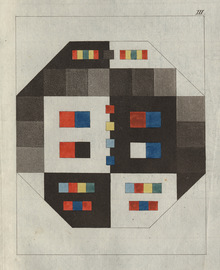Browse by category
- Subject
- Abstract
- Africa
- Amputation
- Anatomy
- Animal
- Animals
- Art nouveau
- Baby
- Beast
- Beasts
- Biology
- Birds
- Blood circulation
- Body
- Botany
- Breasts
- Cataract
- Chemistry
- Colourful
- Colours
- Corpse
- Dentistry
- Dermatology
- Disease
- Diseases
- Dissection
- Epilepsy
- Evolution
- Expressions
- Eye
- Eye diseases
- Eyes
- Faces
- Fashion
- Female breast
- Fishes
- Flowers
- Fly
- Frog
- Fruit
- Fundus
- Graphic
- Head
- Hearing organs
- Herbal
- Hermaphrodite
- Histology
- Human body
- Hysteria
- Impressionism
- Injured soldier
- Injuries
- Insane
- Insect
- Insects
- Lithotomy
- Lymphatic vessels
- Magic
- Marine organisms
- Medical examination
- Medical plants
- Medicine
- Microscopy
- Middle ages
- Midwifery
- Monster
- Muscle manikin
- Museum
- Mushrooms
- Nerve cells
- Neurology
- Nipples
- Nobel prize
- North america
- Nuts
- Obstetrics
- Odontology
- Ophtalmology
- Ophtalmoscope
- Optics
- Organic
- Orthopedics
- Pancreas
- Pathology
- Patient
- Pharmacy
- Physician
- Physiognomy
- Physiology
- Physionomy
- Plants
- Poisoness
- Polyp
- Pop-up pictures
- Portraits
- Prothesis
- Psychiatry
- Psychology
- Renaissance
- Skeleton
- Skin diseases
- Surgery
- Swedish flora
- Tattoo
- Teeth
- Teratology
- Trees
- Us civil war
- Vaccination
- Vocal organs
- War
- Zoology
- Emotion
- Absurd
- Amazing
- Amusing
- Artistic
- Beautiful
- Charming
- Colourful
- Dramatic
- Elegant
- Fanciful
- Fantasy
- Fascinating
- Funny
- Horrid
- Humorous
- Indecent
- Instructive
- Interesting
- Marvellous
- Masterpiece
- Morbid
- Old-fashioned
- Painful
- Remarkable
- Scary
- Spectacular
- Strange
- Superb
- Surrealistic
- Unattractive
- Unique
+ Show all

Example of wounds
-
Feldtbuch der Wundartzney.
Augspurg, durch Hainrich Stayner, 1542.
Bound together with Lorenz Fries, Spiegel der Artzney, Strassburg, Balthassar Beck, 1532. - Show book - Author: GERSDORFF, Hans von (1455-1529)
- First published by Johann Schott in Strassburg in 1517, Gersdorff’s Feldtbuch der Wundartzney is the second earliest illustrated book on surgery, preceded only by Hieronymus Brunschwig’s Buch der Cirurgia (1497). Gersdorff’s book was re-issued several times by Schott and went through at least twelve editions. It was also translated into Latin and Dutch. The present Augsburg edition has the same woodcuts as in the previous Strassburg editions attributed to Hans Wechtlin, the celebrated Strassburg artist famous for his numerous chiaroscuro woodcuts. Some of his woodcuts for Gersdorff were also used to illustrate other medical books of the period. Hans von Gersdorff, known as ’Schylhans’ or ’Squinting Hans’, from Strassburg. was an army surgeon who took part in numerous campaigns, including the Burgundian War (1476) and the battle of Nancy, where Charles the Bold was slain. His widely circulated handbook of wound surgery was based on forty years of experience, chiefly in various military campaigns. Firearms were used in European warfare already in the fourteenth century but handguns and arquebus were novelties during Gersdorff’s time and he became an expert in this new branch of surgery. The book is divided into four parts. The first is a summary of anatomy based on old Arabic authors and the works of Guy de Chauliac (c. 1300-1368). The second part is on surgery, gunshot wounds and amputation. The third part is on leprosy, and the concluding part is a glossary of some 800 samples of plant, animal and mineral origin, and of diseases and anatomical terms. The full-page woodcuts are the best surgical illustrations of the period. The scenes of surgical operations are extremely vivid, and their naturalism, their quality of reportage, represent an impressive step forward in the history of medical illustration.

























